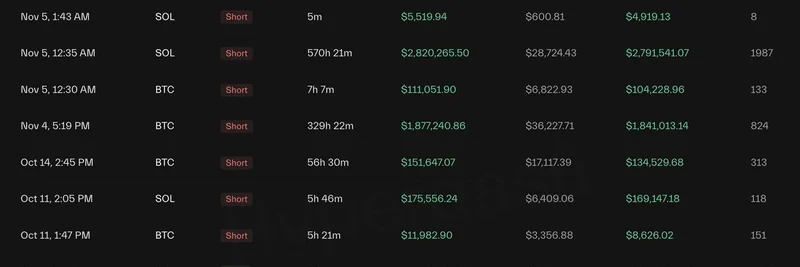In the fast-paced world of crypto, big names like Joseph Lubin, co-founder of Ethereum and founder of Consensys, often drop insights that can shake up the market. Recently, Lubin shared his thoughts on the future of stablecoins, emphasizing the need for decentralized systems like Maker (now rebranded as Sky) that use overcollateralized Collateralized Debt Positions (CDPs). For those new to the term, CDPs are essentially smart contracts where you lock up more collateral than the stablecoin you borrow, ensuring stability even if prices fluctuate.
Lubin's tweet highlighted that while these decentralized setups offer broad ownership and permissionless access, they require "a huge amount more decentralized economic bandwidth" – basically, much higher prices for assets like ETH and BTC to serve as robust collateral. He noted, "We are working on the latter. Then we will work on the former." You can check out the original post here.
Anthony Sassal, a prominent Ethereum educator and founder of The Daily Gwei, chimed in by quoting Lubin and reinforcing the point. Sassal has long argued that for overcollateralized, decentralized stablecoins to scale like their centralized counterparts (think USDT or USDC, backed by companies like Tether or Circle), the underlying collateral needs an enormous market cap. He boldly stated, "ETH at a $100 trillion market cap will be a nice start, but longer-term we want ETH to be worth $1 quadrillion and beyond. Accelerate!"
This kind of moonshot prediction isn't just hype – it's rooted in the mechanics of DeFi. Centralized stablecoins can issue billions because they're often backed by traditional assets like U.S. Treasuries or cash reserves managed by a single entity. Decentralized ones, like DAI from Maker/Sky, rely on crypto collateral, which is volatile. To mint more stablecoins safely, you need way more collateral value to cover potential drops. If ETH hits those astronomical levels, it could unlock trillions in decentralized stablecoin issuance, creating a more robust, permissionless financial system.
Why This Matters for Meme Tokens
Now, you might be wondering: How does this tie into meme tokens, the wild, community-driven coins that dominate headlines on platforms like Ethereum? Meme tokens, from Dogecoin-inspired pups to quirky cultural icons, thrive on liquidity, hype, and easy trading. Many of the hottest memes – think PEPE, SHIB, or newer entrants – are built on Ethereum or its layer-2 solutions.
Higher ETH prices mean more "economic bandwidth" for the entire ecosystem. Here's how it could supercharge memes:
Increased Liquidity Pools: With ETH valued in the trillions (or quadrillions!), DeFi protocols could handle massive stablecoin volumes. This means deeper liquidity for meme token pairs on DEXs like Uniswap, reducing slippage and making it easier for retail traders to jump in and out.
Wealth Effect for Holders: Ethereum's rise would pump the value of ETH holdings, giving users more capital to ape into memes. Bull markets historically fuel meme frenzies, as seen in 2021 when ETH's surge coincided with the explosion of dog-themed tokens.
Stablecoin Integration: Decentralized stables like DAI (or its successor USDS from Sky) could become go-to pairs for meme trading. Imagine swapping your meme gains into a truly decentralized stable without relying on centralized issuers – all backed by a hyper-valuable ETH.
Ecosystem Growth: Sky-high ETH prices attract more developers and investors to Ethereum, leading to better tools, faster transactions via L2s, and innovative meme launchpads. This could evolve memes from pure speculation to tokens with utility, like community DAOs or NFT integrations.
Of course, not everyone's on board. Community reactions to Sassal's post included jokes about hyperinflation getting us there quickly and questions about leaving room for competitors like Solana. One user quipped, "Decentralized stables don't buy USA debt as centralized collateral. I have a feeling that they will be made illegal 'for the general investor safety'." These highlight regulatory risks, but they also underscore the excitement around Ethereum's potential.
Looking Ahead: Accelerate the Meme Economy
Sassal's call to "Accelerate!" echoes the Ethereum community's mantra of pushing boundaries. For meme token enthusiasts, this isn't just about ETH mooning – it's about building a decentralized playground where memes can flourish without gatekeepers. As blockchain practitioners, keeping an eye on these developments helps us navigate the evolving landscape.
If you're diving into memes on Ethereum, start by understanding DeFi basics. Tools like Maker/Sky show how stablecoins can stabilize your portfolio amid meme volatility. And who knows? With ETH aiming for the stars, your favorite meme might just hitch a ride.
Stay tuned to Meme Insider for more updates on how crypto giants' visions impact the meme world. What's your take on ETH hitting $1 quadrillion? Drop your thoughts in the comments!


